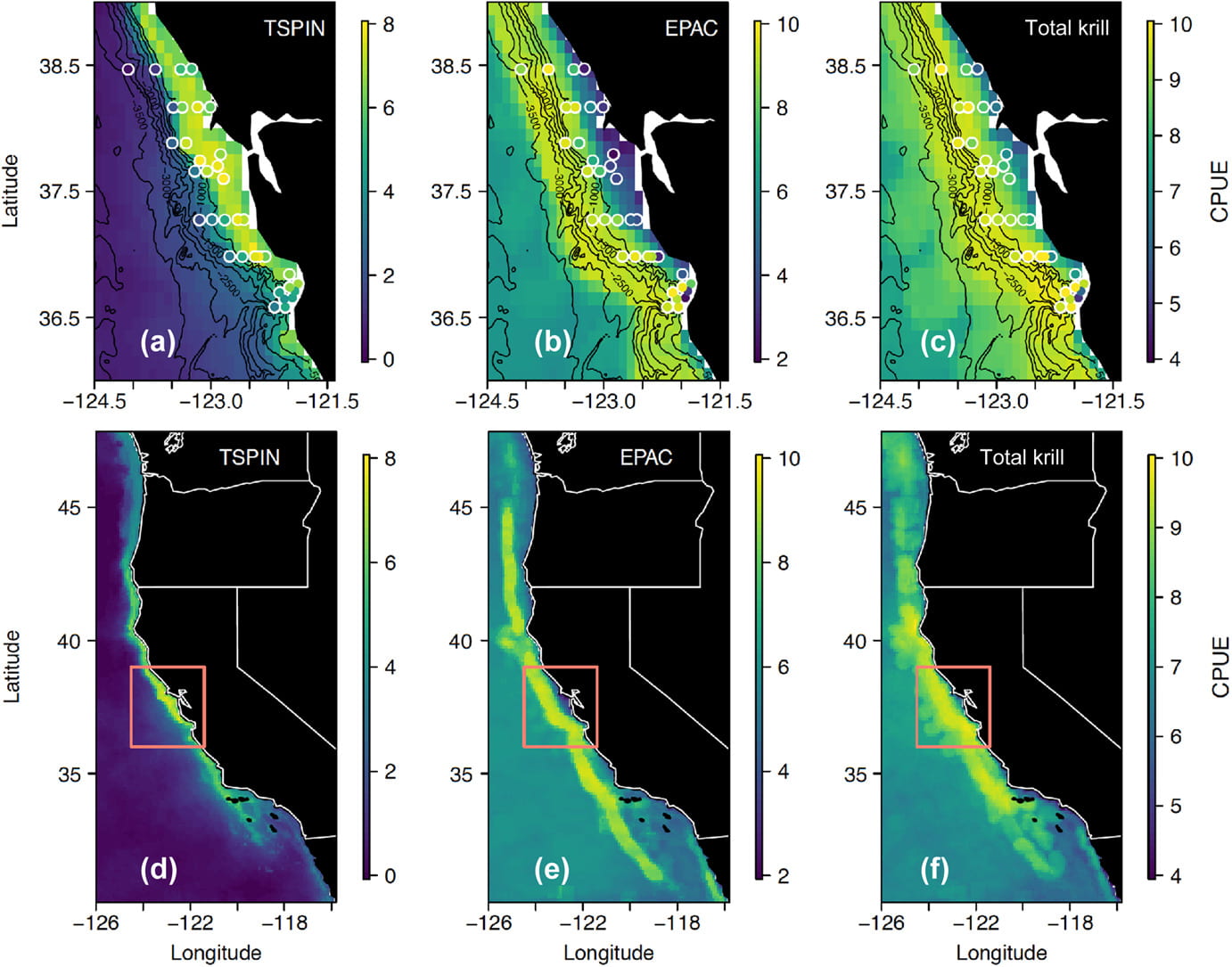Megan’s recent paper uses NOAA’s RREAS cruise data to look at combined krill biomass from net-tows and differences in habitat use between T. Spinifera and E. Pacifica in the California Current. The paper highlights the issues that arise when modeling a species complex rather than individual species habitat preferences. Getting species identification will help partition net tow data in addition to fisheries acoustic measurements of krill biomass moving forward. Krill also had broad scale response to oceanic warming from El Niño events Also not surprising, predictions of high krill biomass corresponded with top predator sightings as well.

Abstract
Due to their global distribution, high biomass and energy content, euphausiids (krill) are important prey for many mid and upper trophic level marine organisms. Understanding drivers of krill habitat is essential for forecasting range shifts, and to better understand the response of krill predators to climate change. We hypothesized that the distribution and abundance of krill species derived from ecosystem surveys in spring/summer relates to geomorphic features, coastal upwelling during the preceding winter, and spring mesoscale oceanographic conditions. To test this hypothesis, we used boosted regression trees with environmental data and ocean model output to quantify the habitat associations of two primary krill species (Euphausia pacifica and Thysanoessa spinifera ) in the central California Current Ecosystem from 2002 to 2018. Models confirmed the neritic distribution of T. spinifera and pelagic, outer slope association of E. pacifica (deviance explained ~35%). Distribution of these species were influenced by depth and bottom rugosity; chlorophyll‐a concentrations and increased winter upwelling conditions; and spring surface currents and wind stress. Thysanoessa spinifera and E. pacifica abundance responded negatively (positively) to warm (cold) climate events, confirming known relationships. As an independent evaluation of krill models, observations of krill predator (seabirds, marine mammals) distribution indicated they were present within habitats of predicted high krill species abundance. Our framework indicates species‐specific habitat relationships for these foundational forage species and their negative response to large‐scale climate variations, such as El Niño and marine heatwave conditions. The approach can be easily transferred to other ecosystems or krill species that respond to similar ocean and climate forcing.
